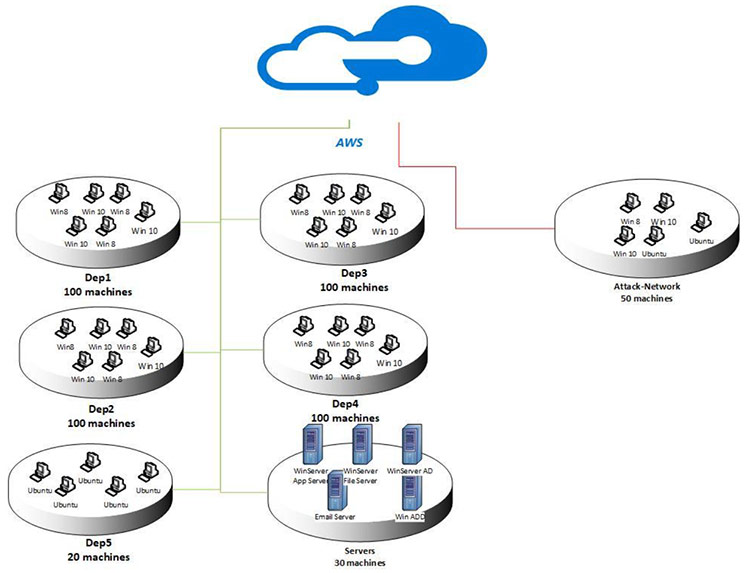Cyber crime causes billions of dollars in damages and results in millions of exposed personal records every year. Though hardly sufficient, machine learning forms an important weapon in our arsenal of defenses against criminals. This repo includes the data prep, analysis, feature engineering, and model selection/training process involved in building such a defense. The end result is a random forest classifier with an overal F-Score of 0.85, though poor performance in one class brought average scores down considerably.
For such a critical problem to solve, there is a surprising paucity of abailable network traffic data. Unsurprisingly, much network traffic consists of the most intimate (and, no doubt, the most banal) details of users' lives, and this intimacy precludes the publication of large, open datasets for privacy reasons. In an attempt to fill this lack, the University of New Brunswick simulated the behavior of a 500-machine network, carried out a variety of attacks, and collected the resulting network traffic and logs. To facilitate research, they also released extracted features in csv-form. The resulting packet captures are over 450 gigabytes total, and the provided dataframes have over 50 million observations.
Due to the enormouse size of the dataset, we need a way to query the data from disk. For ease of access and replicability, I host the data on a postgres server run in a docker container. The init.sh shell script downloads the data, cleans it with pandas, builds the docker container, and then copies the data to the database. Just make sure you have docker and the packages in requirements.txt installed before running the script.
My first approach was to utilize the provided dataframes with extracted features. Though much smaller in size than the provided packet captures, the data are still too large to fit into an average computer's memory while running a machine learning algorithm. I therefore needed to reduce the number of features in the dataset in order to fit the data into memory. I selected features by running a random forest model on a random sample of the data and picking the top 14 features ordered by feature importance. I then pulled only those features from the database and ran a random forest model on the entire dataset.
